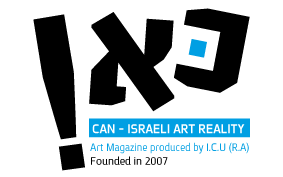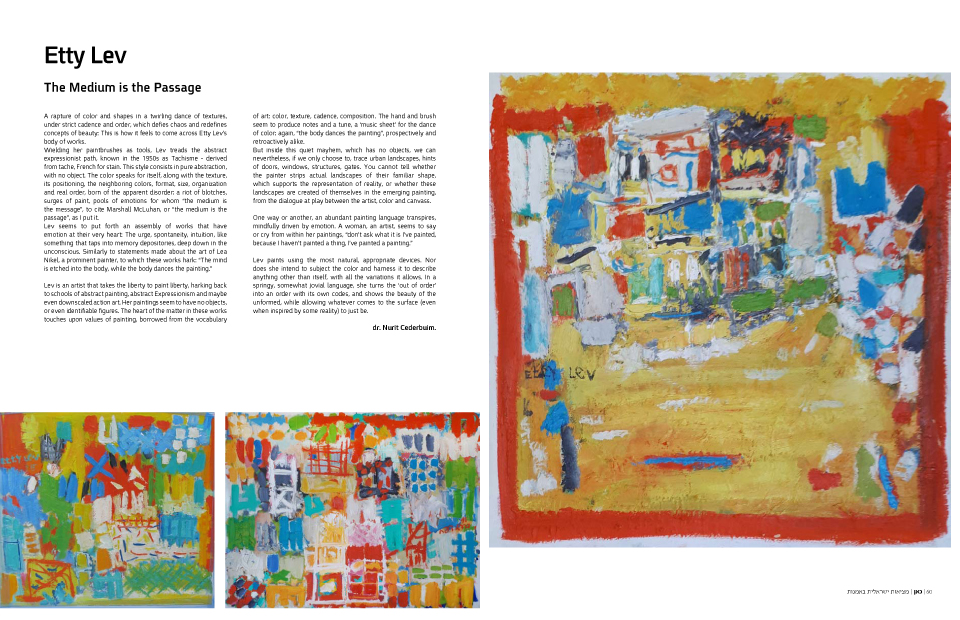
| Home Page | Editor Notices | Museums | Galleries | Publication | Donation | Contact Us |


 | |||||||||||||||
| |||||||||||||||


| |||||||||||||||
| Etty Lev / The Medium is the Passage |
A rapture of color and shapes in a twirling dance of textures, under strict cadence and order, which defies chaos and redefines concepts of beauty: This is how it feels to come across Etty Lev’s body of works. Wielding her paintbrushes as tools, Lev treads the abstract expressionist path, known in the 1950s as Tachisme – derived from tache, French for stain. This style consists in pure abstraction, with no object. The color speaks for itself, along with the texture, its positioning, the neighboring colors, format, size, organization and real order, born of the apparent disorder; a riot of blotches, surges of paint, pools of emotions for whom “the medium is the message”, to cite Marshall McLuhan, or “the medium is the passage”, as I put it. Lev seems to put forth an assembly of works that have emotion at their very heart: The urge, spontaneity, intuition, like something that taps into memory depositories, deep down in the unconscious. Similarly to statements made about the art of Lea Nikel, a prominent painter, to which these works hark: “The mind is etched into the body, while the body dances the painting.” Lev is an artist that takes the liberty to paint liberty, harking back to schools of abstract painting, abstract Expressionism and maybe even downscaled action art. Her paintings seem to have no objects, or even identifiable figures. The heart of the matter in these works touches upon values of painting, borrowed from the vocabulary of art: color, texture, cadence, composition. The hand and brush seem to produce notes and a tune, a ‘music sheet’ for the dance of color; again, “the body dances the painting”, prospectively and retroactively alike. But inside this quiet mayhem, which has no objects, we can nevertheless, if we only choose to, trace urban landscapes, hints of doors, windows, structures, gates. You cannot tell whether the painter strips actual landscapes of their familiar shape, which supports the representation of reality, or whether these landscapes are created of themselves in the emerging painting, from the dialogue at play between the artist, color and canvass. One way or another, an abundant painting language transpires, mindfully driven by emotion. A woman, an artist, seems to say or cry from within her paintings, “don’t ask what it is I’ve painted, because I haven’t painted a thing, I’ve painted a painting.” Lev paints using the most natural, appropriate devices. Nor does she intend to subject the color and harness it to describe anything other than itself, with all the variations it allows. In a springy, somewhat jovial language, she turns the ‘out of order’ into an order with its own codes, and shows the beauty of the unformed, while allowing whatever comes to the surface (even when inspired by some reality) to just be. dr. Nurit Cederbuim. Read more  |
| all rights reserved - CAN ISRAELI ART REALITY |
| סייבורג מחשבים - בניית אתרים |